In April 1995, Toshiba released the largest (in capacity) 2.5″ drive in the world: the MK2720FC. Housing 5 platters, 10 heads and reigning in at a whopping 19mm in height, these drives are quite the beastly 2.5″ models. As a result of this rather large head-stack mass for a 2.5″ form factor, these are reasonably comparable to a standard 3.5″ drive from the time in terms of noise output.
Of course, with the rapid expansion of hard drive capacity in the mid to late 90’s, the MK2720FC would only hold the highest capacity crown for so long. By mid-1996, the MK2720FC was superseded by the MK2101MAN to hold that title, within Toshiba at least.
The MK2720FC would remain as a standard model Toshiba produced for a few years in their line-up, finally ending production in mid-1998.

Drive Attributes ------------------------------------- Toshiba MK2720FC ------------------------------------- Capacity 1358MB Mfc Date 1996-10-05 Format 2.5" Height 19mm Interface PATA Platters 5 Heads 10 RPM 4200 -------------------------------------
Toshiba released these models in two seperate variants. The MK2720FC demonstrated here uses a standard 44-pin IDE connector/fast ATA interface, whereas the MK2720FB utilises a SCSI-2 interface.
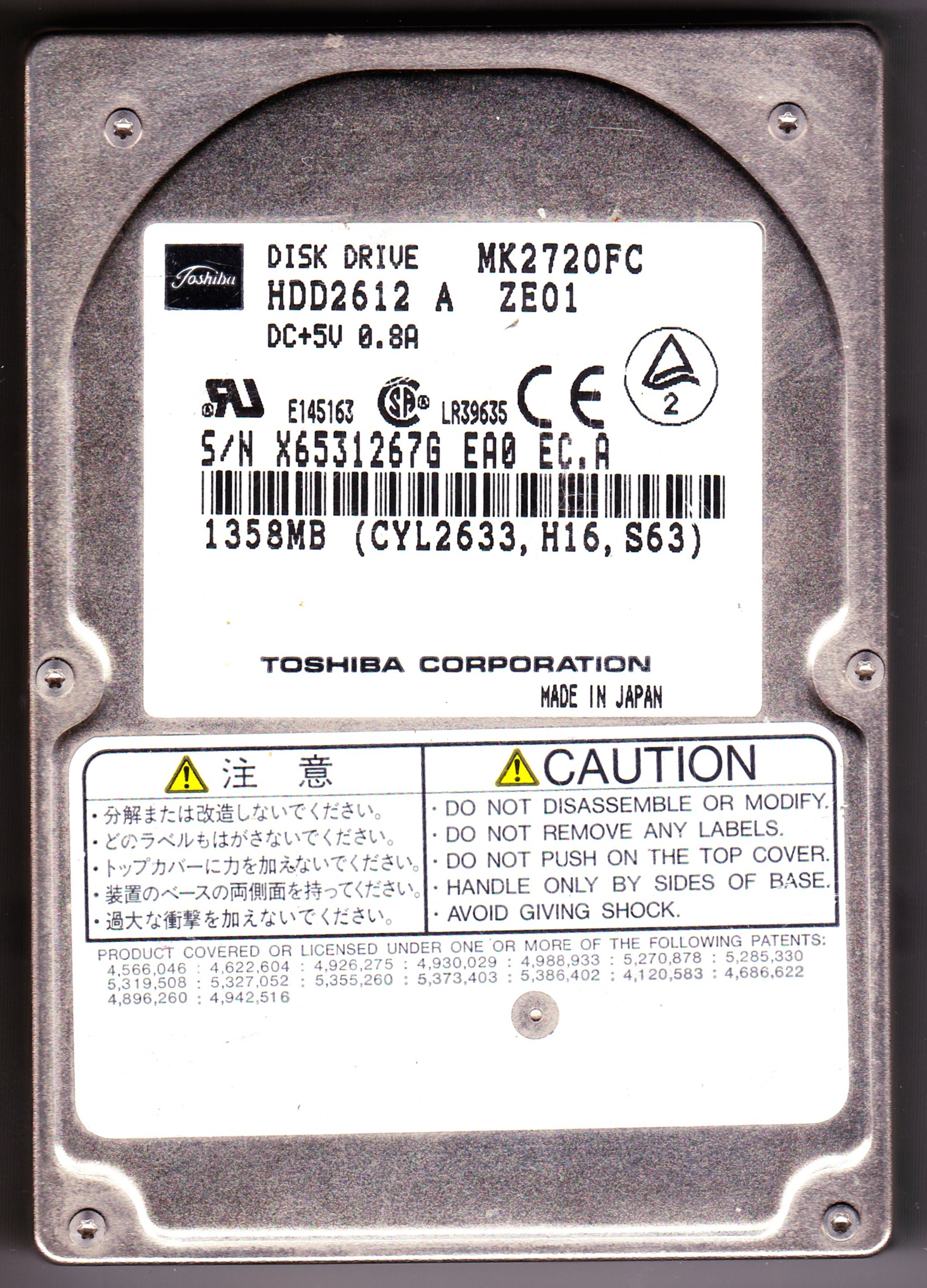
Based on the serial number above, this drive was produced a year and a half after this model was initially released. As usual with most Toshiba drives from this period, it was produced in Japan. Toshiba’s factory in the Philippines would become more active in 1997 with models such as the MK1002MAV, but notably this model was never produced outside of Japan.
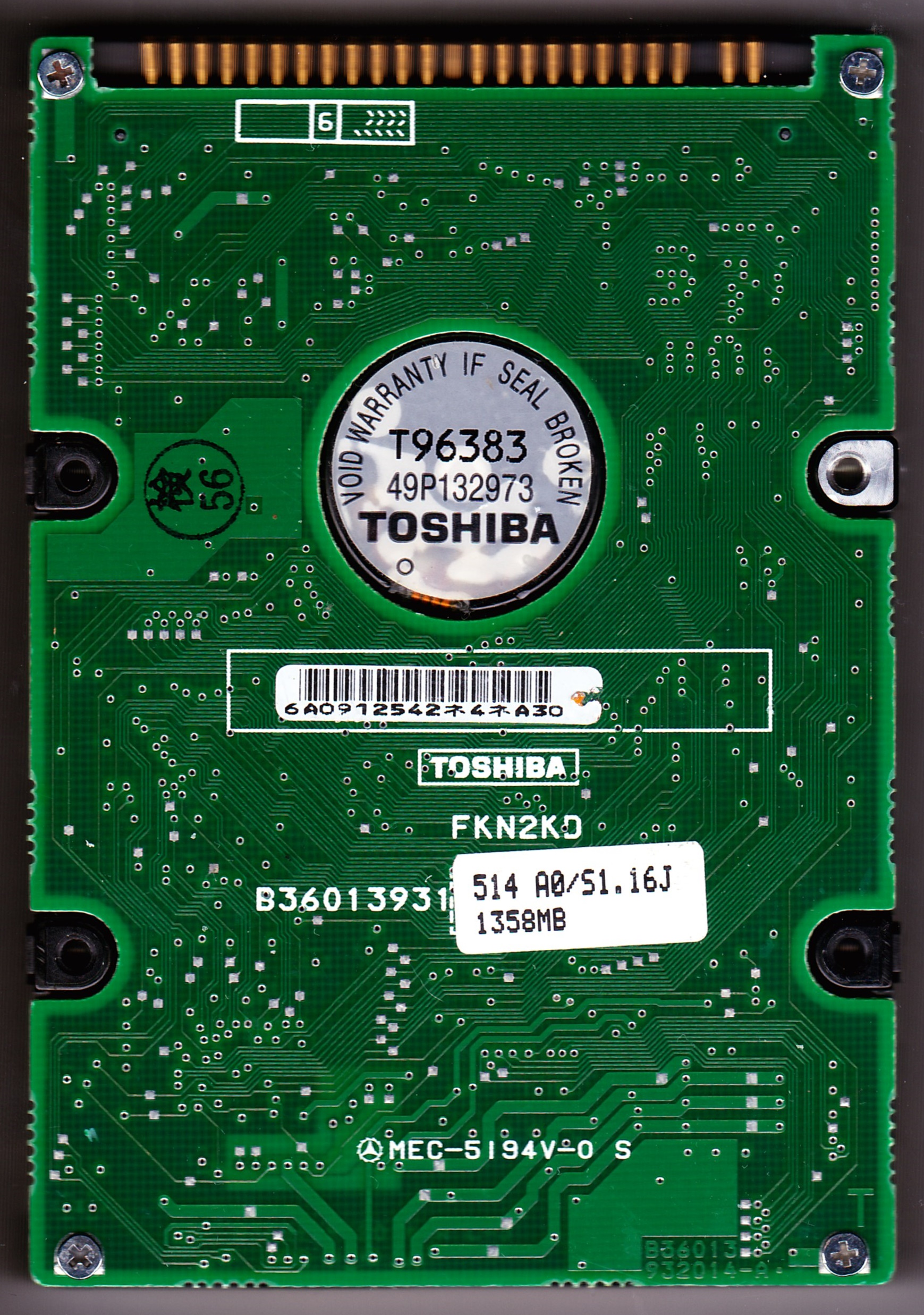
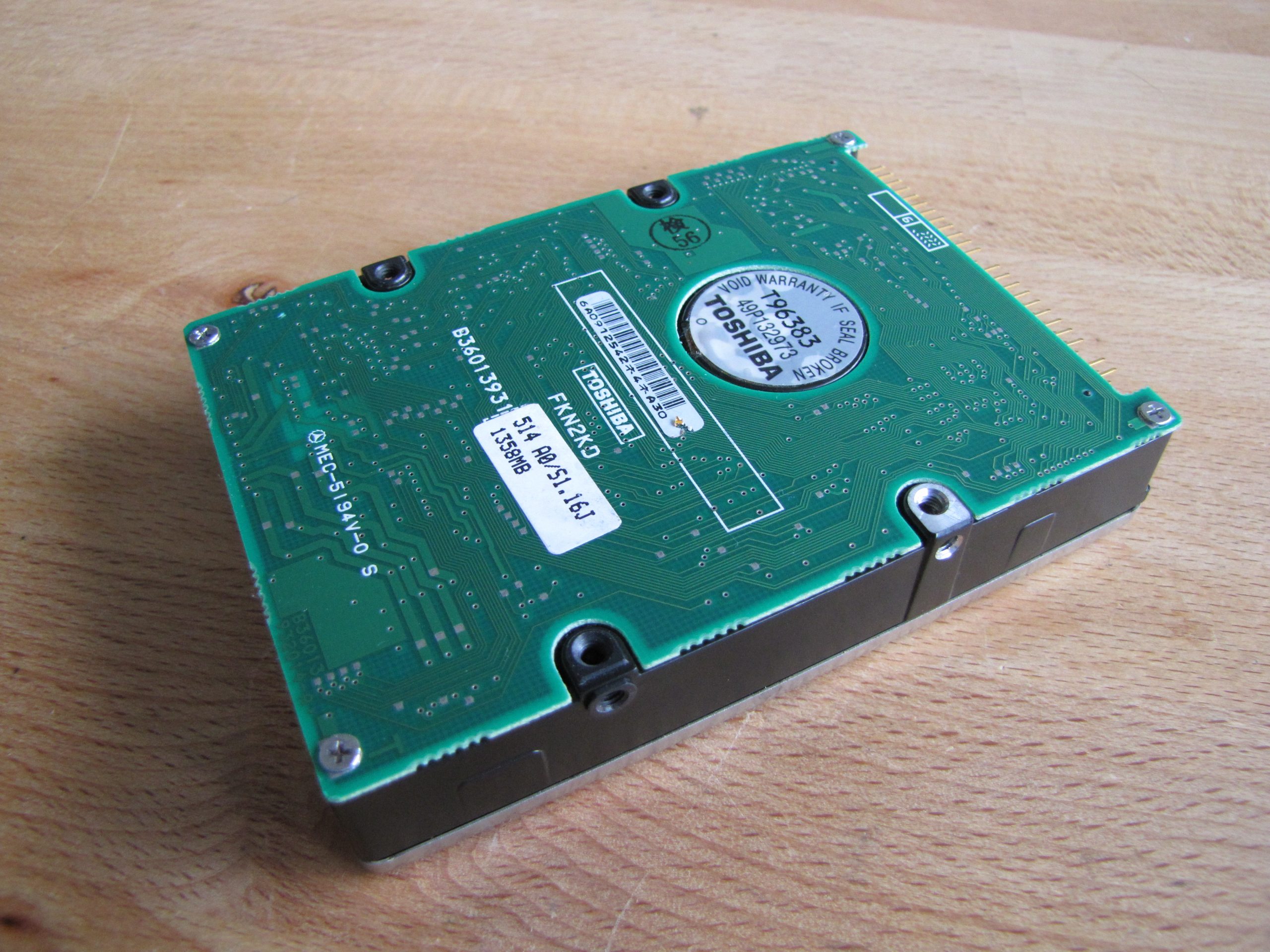
Toshiba had several thinner comparable models from the time, with near identical PCB and top-plate construction. This model is fundamentally just an oversized MK1926FCV, with identical platter density (those having 3 platters, a capacity of 815MB and a relative surface density of approximately 135MB per side, being 12.5mm in height). Both models were released at the same time.
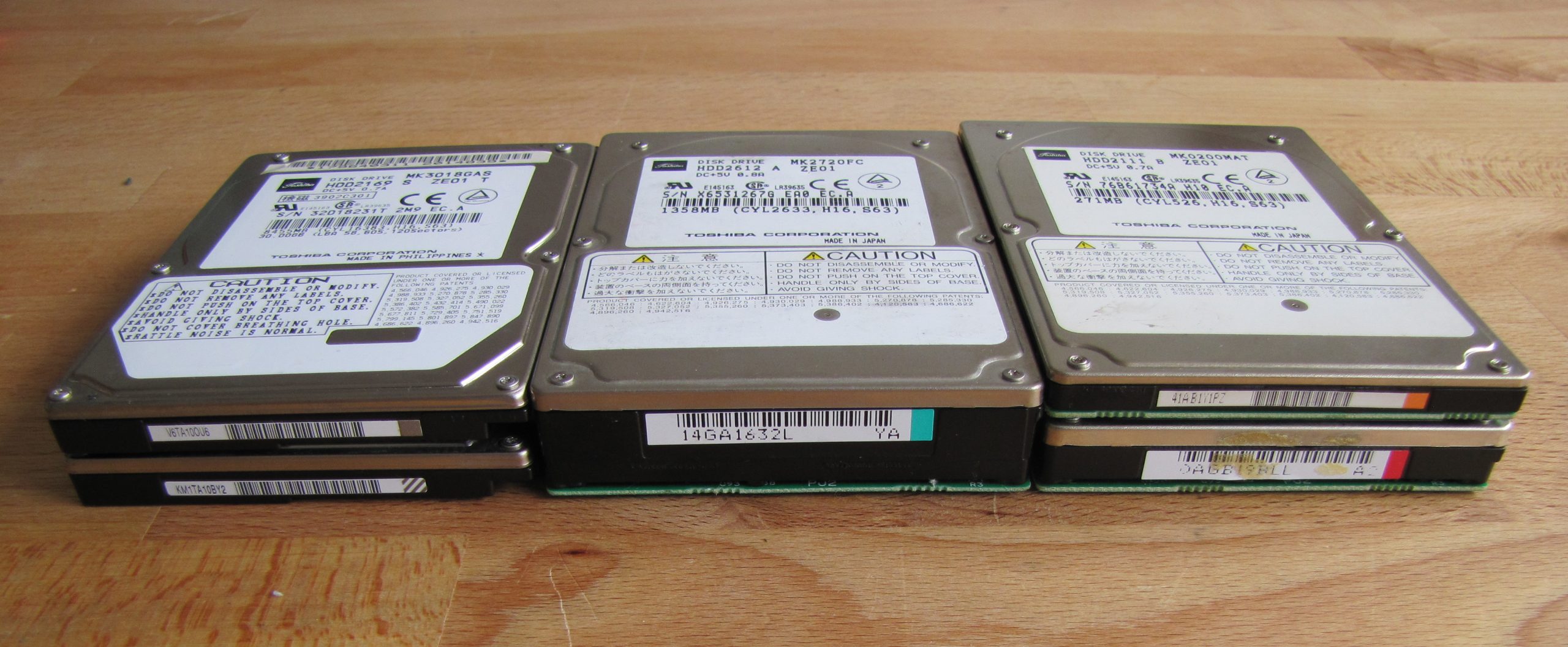
Where most modern drives come in between 9.5mm to 7mm height (when concerning 2.5″ drives), the MK2720FC definitely has a presence in the room with its 19mm height. This picture demonstrates the relatively consistent design Toshiba used for their drives in the 90’s, when comparing the MK2720FC to the MK0200MAT (on the top right).
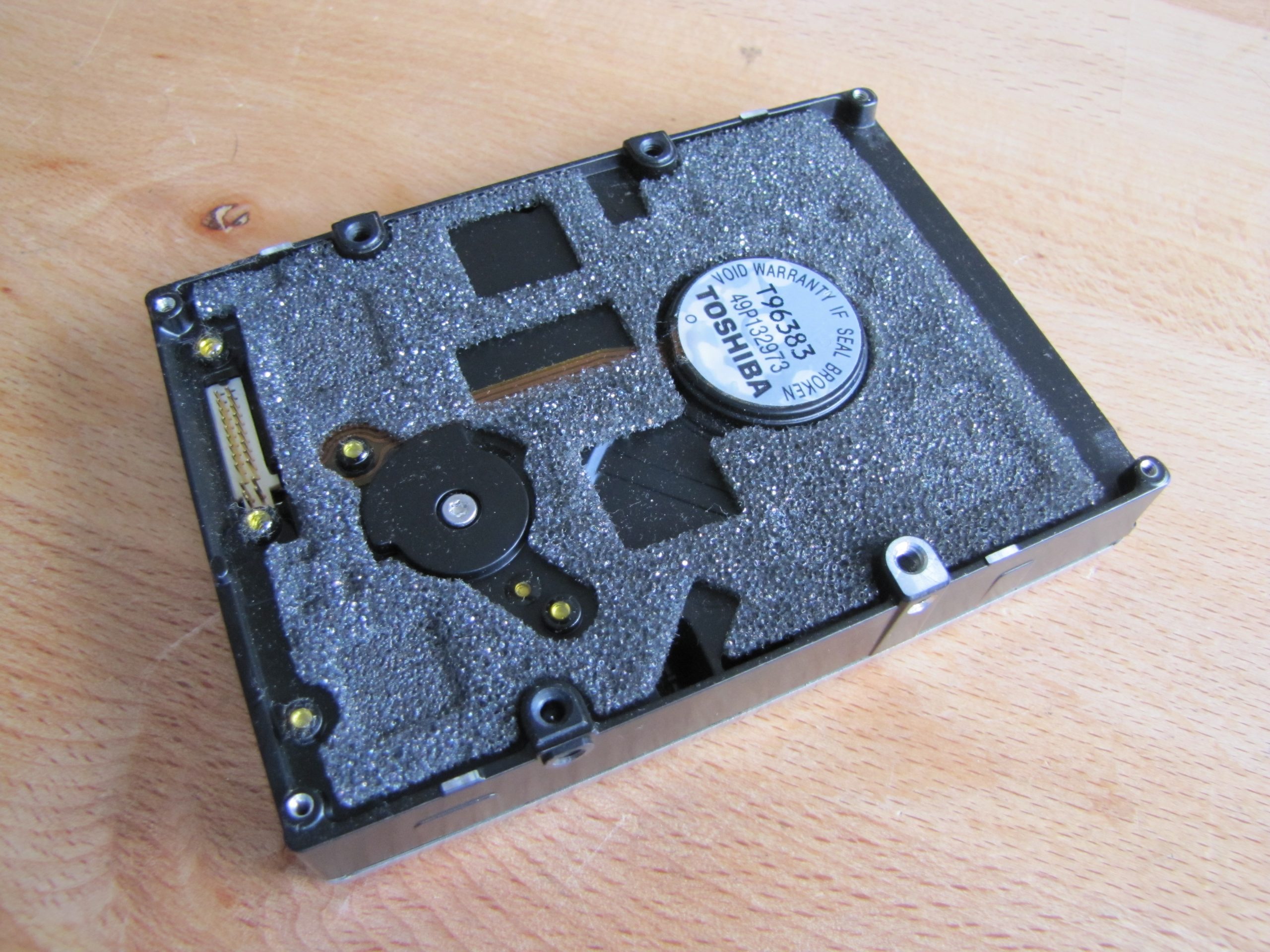
Removing the PCB gives access to the underside of the drive, holding a piece of foam which seperates the PCB from the main drive assembly. The usual head-stack connection pin block is present at the bottom of the drive, being a personally much more preferred form of connection as opposed to pressure-contacts from manufacturers such as IBM at the time with 2.5″ drives.
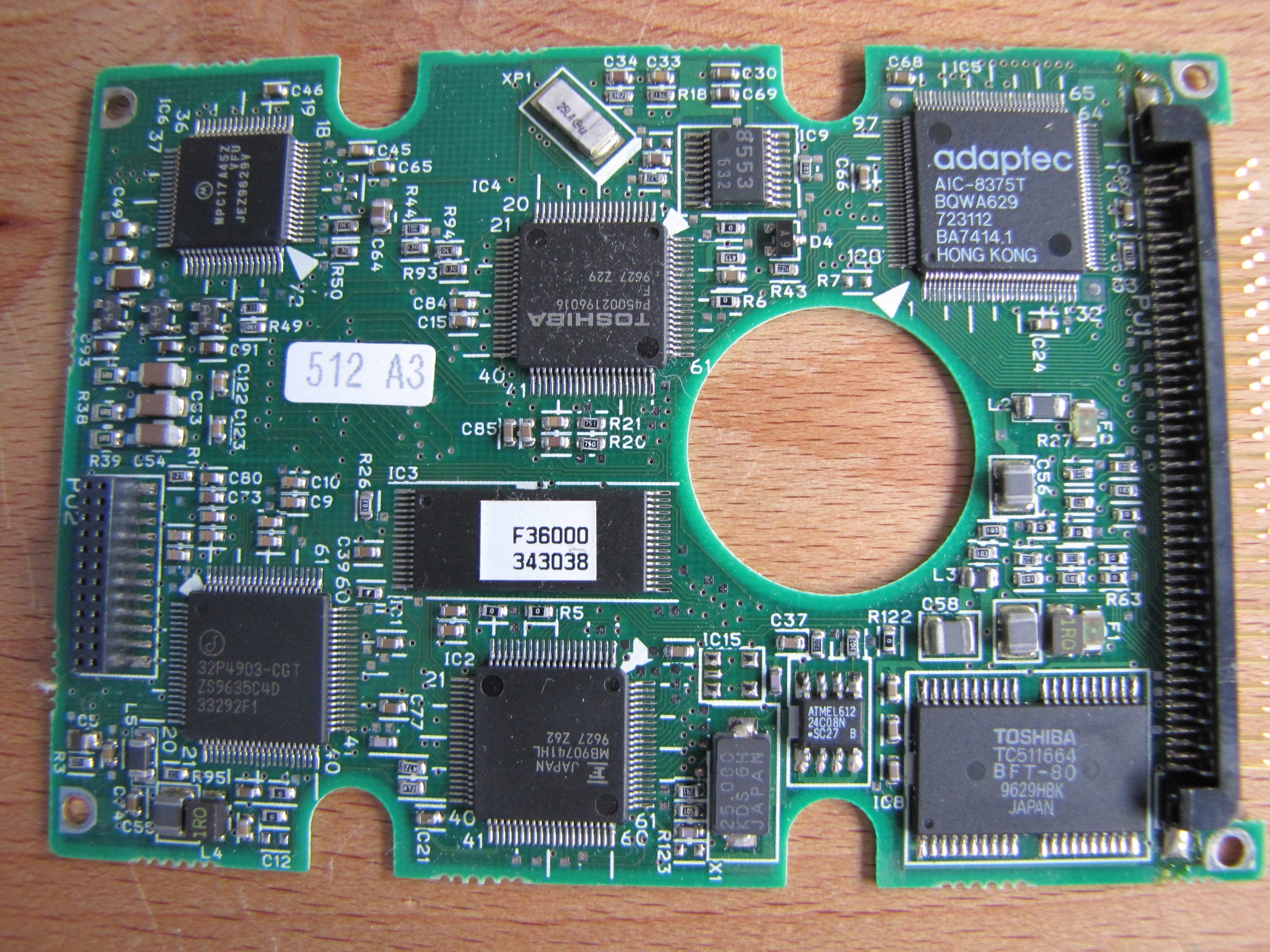
At this point, Toshiba had simplified their PCB designs by a large margin. This was mostly accomplished by the consolidation of integrated circuits, but it’s clear Toshiba’s days of solely providing their own chips for each purpose were over. An example of which is the Adaptec AIC-8375T IDE interface controller, which would have easily been switched with a suitable model for the SCSI-2 MK2720FB counterpart.

Of the many Toshiba 2.5″ drives I own from the 90’s, they all have a fairly consistent health readout. There’s always zero or very few bad sectors, yet a fair amount of slow sectors. This MK2720FC is no different, with a fair few slow sectors. Nonetheless, having no bad sectors over 26 years later is quite impressive! Toshiba were a pioneer in glass-platter mediums, which is really proven in drives such as this.
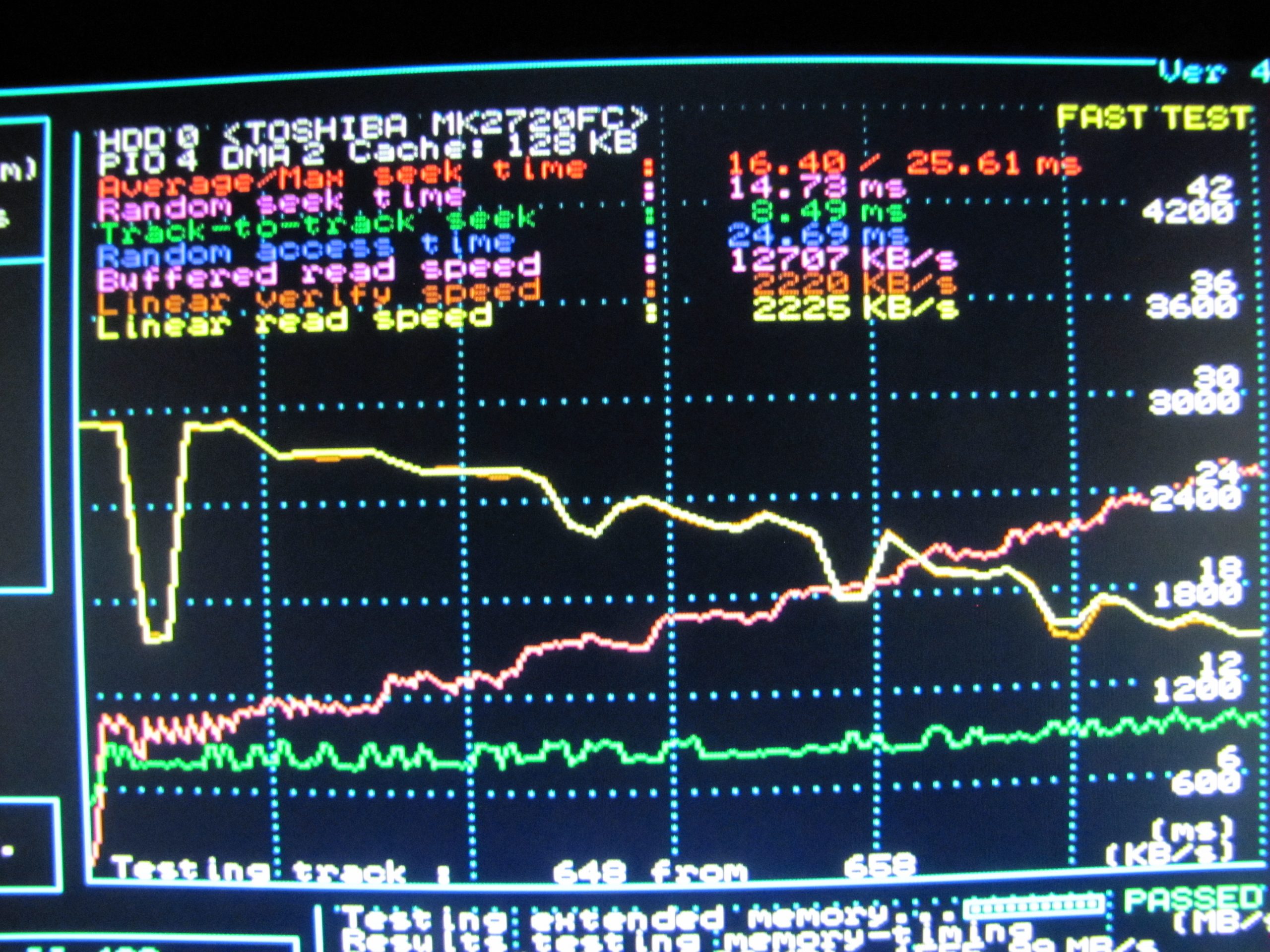
These aren’t the fastest drives in the world, but they are fairly interesting models nonetheless.
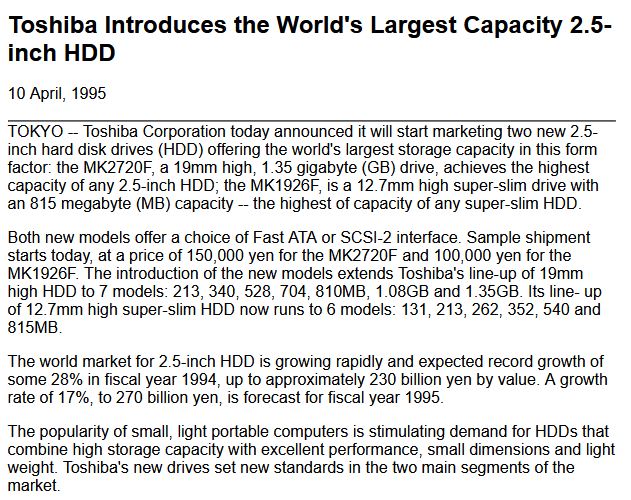
According to Toshiba, these drives launched at a price of 150,000 yen, which equates to just over $1k. This doesn’t even equate for inflation, meaning these drives were certainly fairly unattainable for the masses at the time.
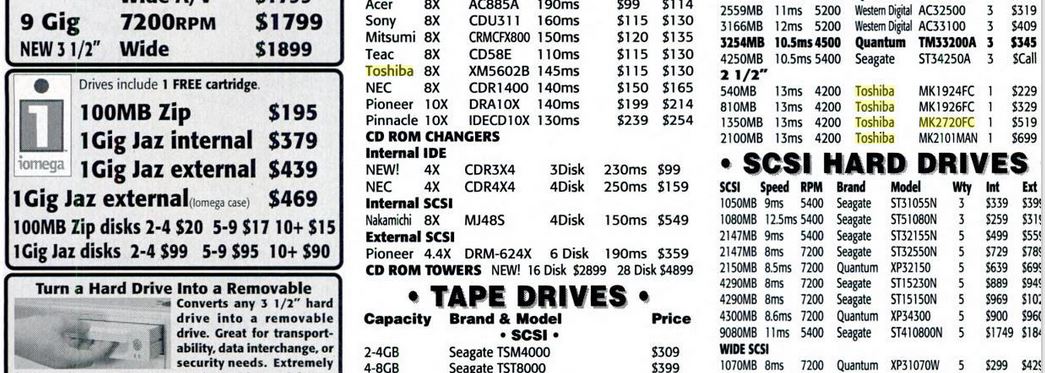
In 1996, being a year after initially being produced, these drives cost a cool $519. Certainly a far sight cheaper than these models were at launch, but nonetheless still quite the lump of cash.
After 26 years, the MK2720FC keeps on ticking. Hopefully these drives will remain to function well into the future, as is seemingly the case with many of Toshiba’s older 2.5″ drives.
If you missed the video I made on this drive, you can find it here: